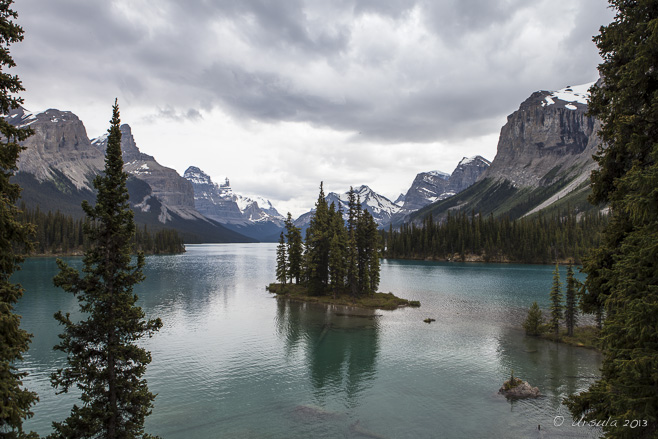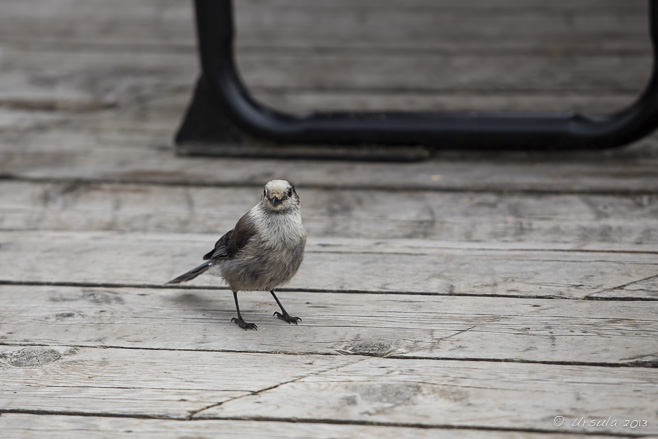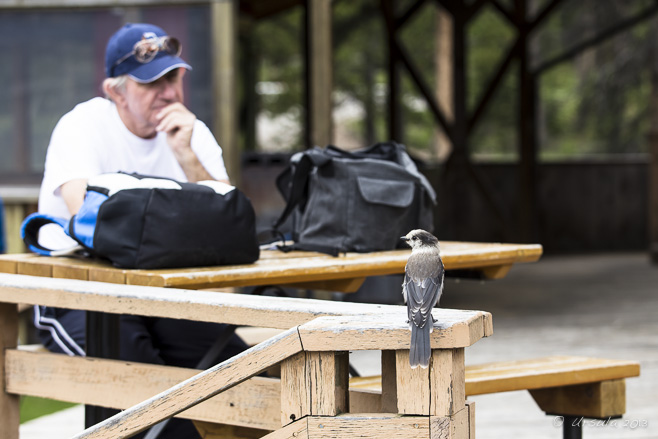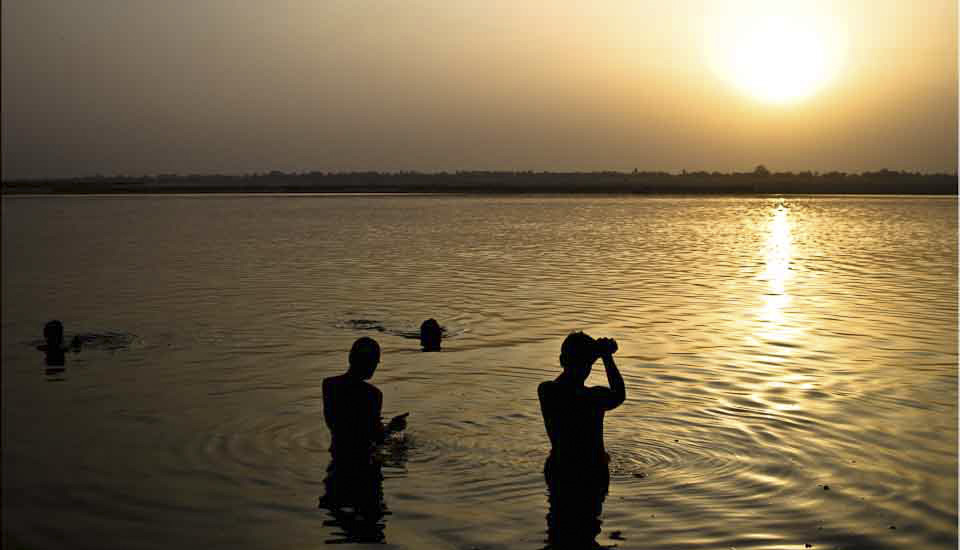 Spirit Island
One from my Bucket List! This scene is known to every Canadian from postcards and calendars. It’s an image all Canadians, and many people around the world, recognise: the tiny island with its tall lodgepole pines, sitting in the clear turquoise waters of Maligne Lake and surrounded by the snow-capped glacial peaks of the Rocky Mountains.
I’ve known this place from pictures all my life, and have waited a long time to visit Spirit Island for myself.
I have a love affair with Canada’s Rocky Mountain Parks (Banff, Jasper, and Yoho National Parks) and will go to them at any opportunity. I used to visit Banff regularly, but it was lucky that we had planned, months ago, to drive much further afield – north – to Jasper.
On Thursday, June 20, 2013, just two days before our arrival into Alberta, major rainfall closed roads, forced the evacuation of downtown Calgary, and cut Banff off for days. On our drive north to Edmonton, we drove past scenes of heartbreaking inundation. The TransCanada Highway was closed, and no one was getting in or out of the Banff area.
It was still raining as we continued north to Edmonton and west to Jasper. But, the Rockies are magnificent, even in the wet.
In spite of heavy cloud cover, the rains held off the day we drove the two hours from our cabin to the iconic Maligne Lake.
It’s a stunningly beautiful place, with an “evil” name: Father Pierre-Jean De Smet (1801–1873) named the river that feeds the lake “Maligne” (malignant, evil, or wicked) River. Against the advice of locals, he had tried to cross the waters, turbulent from the spring melt, and escaped (only barely) with his horse and his life.
Our trip was much easier: after a late lunch at the visitors’ lodge, we took the 90 minute boat trip out to Spirit Island, “one of the most photographed locations in the world.”
 Gray Jay (Perisoreus canadensis)
A cheeky little Canada Jay (Grey Jay or Whiskey Jack) watches to see if we will drop any tasty morsels.  Camp Robber
Also known as a Camp Robber, the little bird gives up on us, and eyeballs another diner.  Boat House  Wet Spring
The boathouse is dark inside: atmospheric and flooded.  Kayaks
There are plenty of boats for rent if you want to tour the lake yourself.  Boat Dock
We opted for the easier, motorised trip.  Captain Gregg
A youthful looking Gregg greets us at the dock.  In the Boat
It is a popular tour, and the boat is full as it cruises through the Rockies.  In our Wake
Another boat heads back to the dock as we cruise Maligne Lake.  Fly the Flags  Kirsten and Gregg  Mountains all Around
Our commentator Kirsten entertained us with in-depth information about the area.  Glaciers
As gray as the overcast day, the glaciers, high in the mountains, can be hard to see.  Spirit Reflections
Finally! We arrive at the tour’s highlight: Spirit Island, and we get off the boat for a short walk.  There is just enough time for pictures …  … before we head back through the Rockies…  Just Stunning!  I’ve moved Maligne Lake off my Bucket List, and onto my “Gotta go back when I have more time” list. I’ve moved Maligne Lake off my Bucket List, and onto my “Gotta go back when I have more time” list.
Truly a place to see – at least once.
Happy Travels!
Pictures: 24June2013
 Timeless Calm
A modern chedi stands among ancient temple ruins, Inwa Island, Myanmar. Away from the gilded and jewel-bedecked temples filled with monks in maroon robes and nuns in pale pink, Myanmar hides a quiet, almost idyllic, rural landscape dotted with ancient ruins.
Just 21 km south of Mandalay, nestled in the confluence of the Myitnge and Irrawaddy (Ayeyarwaddy) rivers, across from the busy monasteries and shiny temples of the Sagaing Hills, you will find Inwa Island. A trip to the island is like a trip back in time.
Late last September, my travel companions in Myanmar – a group of photography enthusiasts, photographer Karl Grobl, local guide Mr MM – and I, piled into wooden boats and plugged our ears against the noise of the outboard motors. Looking nonchalant, the driver of the boat I was in alternated between steering the outboard with his foot and by hand, as he landed us safely on the muddy bank that passes for a pier.
 Like a model in a fashion shoot…  …our boatman stands against the sky  Irrawaddy River Boatman At the Inwa Island “dock”, we were met by the usual assortment of locals with trinkets for sale, and a “fleet” of pony carts and their drivers to transport the day trippers around. The unpaved roads were muddy and wet; it was easy to see why horse carts are the preferred tourist transport on the island.
 Pony Carts Officially called Ratanapura (City of Gems), the artificial island was created by Prince Thadominphya in 1364 to be home to the imperial court of the ancient Kingdom of Inwa (also known as Innwa, Ava or Awa). It was the capital during five separate periods from the 14th to 19th centuries, before being finally abandoned in 1839 after several major earthquakes. No other city in Myanmar has been the seat of government for so long.
 Ruins among the Fields
Our first stop was at the Yadana Hsimi Pagodas.  Farming Couple
Land around the temple ruins are ready for planting.  Buddha  Chedis  A Young Visitor  Gargoyle
Beautiful stone lintels survive around the ruins, Yadana Hsimi Pagodas.  Buddha in the Ruins  Washing at the Well
There is always life around temples; whether they be new or old ones.  Our horse-cart is ready to take us to the next place of interest. Our second stop was across the island, at the Bagaya Kyaung or ‘Star Flower Monastery’, a beautiful old teak building, ornately carved and supported on 267 massive teak posts. Built in 1834, the monastery is still in use today as a classroom for the village children.
 Reflections at the Temple
A tree-lined road approaches Bagaya Kyaung…  ‘Star Flower Monastery’
… the wonderful teak temple, originally built in 1834 to educate the royals.  Monastery Roof
Typical Burmese-style roofline.  Buddha Shrine
A small chedi, with a smaller buddha.  Monk in a WIndow  Little Monks
Novice monks try to stay awake to do their school work inside the dark temple.  Gossip
Outside the monastery, vendors chat while waiting for the tourists to come.  Mango Bowl
As soon as tourists emerge, vendors are ready with their wares.  Incoming Pony Carts Too soon it is time to get back in our horse carts, to ride back across the wet bumpy roads and past the peaceful rice paddies, to our waiting motor boats.
 Outgoing Horse Cart  Woman in the Rice Fields  The Watchtower
Nanmyin, the masonry watchtower, damaged by the 1838 earthquake, is all that remains of the Bagyidaw palace.  Back at the Dock  Truly a charming and peaceful place – Truly a charming and peaceful place –
a reminder of simpler times.
Happy travels!
Pictures: 14September2012
Posted in History,Myanmar,Rural,TravelTags: architecture,blog,buddhism,buddhist,Myanmar,nature,Photo Blog,ruins,rural,temple,travel,Travel Blog,Ursula Wall,worship
 Memorial Cross
On our last day of walking, we are reminded of the high cost of Irish independence. It was with a sense of sadness – and euphoria – that we laced our wet and muddy boots for our last day’s walk around the Dingle Peninsula in Ireland’s County Kerry. The “end” of something so often gives rise to both a sense of accomplishment, and nostalgia.
It was ten long days before that we had set out from Tralee by bus, and then from Camp by foot. We had spent days trudging through rains, down country lanes, into museums and shops and churches, over hills and through bogs, over mountains and across beaches. We were sore and wet and tired: ready for the walk to be over – and sorry that it was all about to finish.
Our last day was meant to be a relatively short one, on foot at least, before we were to catch the afternoon bus from Camp back to Tralee.
Day 10: Castlegregory to Camp and depart
After a final beach walk the way winds inland back to Camp. It’s not a long day but interesting and a good section to wind down your holiday.
The afternoon takes you back to Limerick via public transport from Camp.
Distance: 11 km/7 miles, Ascent: 50m/150 ft
Our first stop, after we set out from our bed and breakfast in Castlegregory, was the local Post Office to buy stamps for post cards. When we asked the elderly Postmistress if postal rates were different for Asia, Australia and North America, she seemed surprised. “There’s us, and there’s others,” she told us.
I guess that is true of most countries, but it certainly highlighted the strong Irish sense of self. We left the post office smiling, mailed our cards, and set off across the countryside.
 “Guinness for Strength”
Every small Irish town has at least one pub.  Stone Bridge
Our path led us through the wet fields and over small bridges.  Hidden House
The grasses are so high in the rolling hills that small farm houses seem to disappear.  Celtic Cross
The Irish Republic declared itself independent from Great Britain in January 1919, but continued to fight until the treaty 6 December 1921.  Wild Roses
Thanks to the ever-present rain, the foliage is fresh and green all around us.  Daisies
Once again, our path leads us over sandy terrain.  Sandy Coast
Another long beach leads us around Tralee Bay.  Beach Walk
Low clouds and a long beach…  Rocky Coastline
As the tide comes in, we lose sand, and meet more rocks.  Nature’s Art: Colourful Rocks  Nature’s Art: Moss on the Rocks  Rocky Shore  Looking out to Sea
On many of the headlands, sculptures look or point out to sea.  Back to Civilisation
As we turn off the beach and round a corner towards Camp, an old church comes into view. We trudged into Camp early, but too late for the morning bus which had left an hour before. So, we resigned ourselves to a long wait at the local pub – not a bad place to be – for the afternoon bus that we were too early for.
 But, the luck of the Irish was with us. But, the luck of the Irish was with us.
We met up with the hostess from our first night’s stay, and she graciously offered to drive us into Tralee, rather than making us wait.
So, our trip came full circle, with a reminder of the the warm generosity of the Irish people.
Sláinte!
Pictures: 27June2012
Posted in Ireland,Landscapes,Nature,TravelTags: blog,Photo Blog,rural,The Dingle Way,travel,Travel Blog,Ursula Wall,walk
 Seattle Reflections
Symbols of a hip and modern city: The Space Needle shines in the polished metal sides of the funky Experience Music Project Museum. Every city has a “past”.
Even an eclectic and worldly city like Seattle – the home of grunge and Dr. Frasier Crane; Microsoft and Starbucks Coffee – has a rough and colourful story. Scratch the surface of the modern architecture and you will find a wild pioneer history, traces of which survive beneath the modern city streets.
Literally!
For, as it turns out, Seattle was originally ten feet lower than it is today.
We learned this, and much more, when we went on a “Bill Speidel’s Underground Tour” last month. We started our guided walk in a restored 1890’s saloon that once belonged to David Swinson “Doc” Maynard, one of the city’s more open-minded forefathers.
 Our Guide to the Underground
Our tour began inside a restored version of Doc Maynard’s Public House. We then passed through Pioneer Square, where a bust of Chief Seattle stands as a reminder of the original peoples of Washington State, the First Nations of the Suquamish and Duwamish tribes.
 Chief Seattle (1790-1866)
Seattle (the most common transliteration of his name) was chief of the Dkhw’Duw’Absh and Suquamish people at the time of first European settlement.  The Keys to the Underground
Our guide briefs us before opening up the the doors to the underground.  Old Seattle
The old town was built of wood – and very close to sea level. Seattle can date it’s European settlement back to 1851-1852, when a number of competing interests, most notably the very pious pioneer brothers Arthur and David Denny, entrepreneurial mill owner Henry Yesler, and the generous and fun-loving doctor and water-front developer “Doc” Maynard, developed vast tracts of land.
The burgeoning town relied on the shipping and timber industries. Prostitution, liquor, and gambling in the freebooting and relatively lawless waterfront area ensured that workers had somewhere to spend their free time and money.
 Under the City
The rough walls of the original Seattle; now underground. A key player in Seattle’s underground history is modern plumbing.
“The town’s proximity to sea level caused a new problem, literally, to rise up. In 1851, the same year the Denny party arrived, a fancy new device was introduced at the White House. It was called a “water closet,” and, boy, did these things take off in popularity. Even in the tiny frontier town of Seattle, indoor toilets became the rage.”
Locally known as “crappers”, after the British plumber Thomas Crapper, who modernised indoor plumbing and bathroom fittings, and was, by Royal Warrant, plumber to British kings, toilets were everywhere. Twice a day, with the incoming tides, crappers all over the young city would back up.
Not a pretty thought!
 Old “Crapper”
A bathroom from the 1800’s remains exposed in the underground rooms.  111 Yesler
Underground street signs correspond to those above; Yesler’s name is everywhere in Seattle.  Through the Streets
People on elevated walkways, above the cracked old streets and under the busy new streets. The Great Seattle Fire of June 6, 1889, which started when a carpenter’s apprentice let his glue pot boil over, and which didn’t finish until more than 25 blocks of mostly wooden buildings had been razed, gave the city a new lease on life. The fire made international news, and relief money poured in, allowing the city to rebuild: in stone and brick, rather than wood, this time.
To deal with (or bypass) the problem of soggy lands and dodgy plumbing, the city built retaining walls, eight feet or higher, on either side of the old streets, filled the spaces between them, and paved over the fill, making the streets one story higher than the old sidewalks that still ran alongside them. Sensibly, people started conducting most of their business on the second floor of their buildings, and new sidewalks soon bridged the gaps between the elevated roads and the buildings, creating the tunnels that form part of today’s underground.
 On the Sunny Side of the Street
We emerge from the underground briefly…  Sidewalk Skylights
… to have a quick look at the sidewalks..  Under the Skylights
… before descending again to see what they look like from below.  Skylights
It is surprising how much light there is where the skylights have been left in place.  Bank Vault
We follow our guide through what was once the vaults of the street-level bank, and is now “haunted” underground space.  Iron Tub
All kinds of things are left behind in the various rooms, which belong to the property owners above.  Pipes and Plumbing
Utilities still live under the businesses and sidewalks.  Tin Mouldings
To built quickly and cheaply, tin mouldings, made to look like stone carvings, decorated buildings.  Lumber-Jack’s Boots
In the museum and Underground Tour gift shop, various memorabilia of Seattle’s origins, can be seen.  Lavatory Mists
Seattle had to develop ways of dealing with it’s fickle plumbing system!  Beautiful Crapper
The pièce de résistance: an original porcelain Crapper toilet imported from England! In the early 1900’s the tunnels were sealed off (for fears of plague) and virtually forgotten, until they were rediscovered and reopened in the 1950’s and turned into a popular tourist attraction.
 It’s amazing what you find when you look under the façade of a modern city. It’s amazing what you find when you look under the façade of a modern city.
Happy travels!
Photos: 11May2013
Posted in Architecture,History,USATags: architecture,blog,history,Photo Blog,travel,Travel Blog,urban,Ursula Wall,USA,walk
 Buddha Head
So shiny, you can almost see yourself! U Min Thonze Cave, Sagaing Hills Buddhist temples in Myanmar are clearly loved and well cared for. Offerings of gold, flowers, and incense are everywhere, and the walls and floors are so shiny you can see yourself reflected in them: often the product of donated labour.
Mahamuni Temple, Mandalay, and Soon U Ponya Shin Pagoda, in the nearby Sagaing Hills, which I visited one day in September last year with photographer Karl Grobl, guide Mr MM, and a group of other photo enthusiasts, are two cases in point.
When travelling to new places, it is tempting to rush around and see as much as possible, but I was so taken by the shiny floors in the corridors of Mahamuni Temple (Pagoda), that I stood in a corner for a while, just watching people pass over them.
 Mahamuni Temple
Shiny Floors and Golden Arches  Reflections
Coming and Goings  Elder Monk
When you stand still in a Burmese temple, people come and talk to you. This elder monk wanted to know what I thought of “the Lady” (Aung San Suu Kyi), and asked me to write my opinions in his notebook.  Woman with Flowers  Woman in Blue Mahamuni Temple is a major pilgrimage site because of its revered Buddha image, the Maha Myat Muni (or Mahamuni) Buddha. According to legend, the Mahamuni, or “Great Sage”, is one of only five likenesses of the Buddha made during his lifetime. (Archaeologists, however, date the image at around 150 AD, 600 years after the Buddha’s death.) The 4-meter high, 6.5-ton, bronze image is seated on a 1.84-metre high pedestal in a small chamber, and crowned in gold, decorated with diamonds, rubies and sapphires. Every morning at 4:30, monks wash its face and brush its teeth with care.
Gold leaves (like those pounded out at the King Galon Gold Leaf Workshop) are applied to the face and body of the Mahamuni Buddha by male devotees daily. So much leaf has been applied over the generations that the shape of the Buddha has become lumpy and distorted, with the gold as much as 15 cm thick in places.
 Maha Myat Muni Buddha Image
Women are not allowed in the chamber, and must pay homage to the image from further away; this was as close as I could get.  Silhouettes in the Corridors  Reflecting, Single File  Mahamuni Grandma
Pilgrims, or the homeless, can find a shiny clean corner of the temple to make their temporary base.  Shoe Woman
The light of the temple is reflected in the eyes and the laughter of the people who work there; these people look after the shoes at the entry. Late afternoon of the same day, our little group visited the beautiful U Min Thonze Cave and the nearby Soon U Ponya Shin Pagoda, possibly the most important of the many pagodas, temples and monasteries that dot the Sagaing Hills.
 Circle of Buddhas
Fourty-five porcelain Buddhas curve around the walkway in the U Min Thonze Cave.  Curving Corridor
U Min Thonze Cave shines: from the light streaming in the arched doorways to the reflective tile floors and the gleaming Buddhas surrounded by mosaics of shimmering glass.  Reverie
Reflective surfaces are everywhere in U Min Thonze Cave, creating a dreamlike atmosphere.  Prayers
Burmese come to the Soon U Ponya Shin Pagoda to pay respects and pray to the Buddha.  Smiling Down
The Buddha at Soon U Ponya Shin Pagoda gleams.  Courtyard
The patterned tiled floors at Soon U Ponya Shin Pagoda reflect in the afternoon sun.  Decorative Grill
A delicate grill screens off part of the temple grounds.  Look Up!
A porcelain lion protects the golden chedi at Soon U Ponyashin Pagoda.  Waiting for Customers
Reflected in the bright floor, a man waits for people to use his telescopes. Soon U Ponya Shin Pagoda sits at the top of the Nga-pha (Frog) Hill, and, even without the telescopes available, visitors get wonderful views over the Irrawaddy (or Ayeyarwady/Ayeyarwaddy) River and the temple-dotted Sagaing Hills.
 The Ava (Innwa) Bridge
View over the temples of the Sagaing Hills and the Irrawaddy River.  Pagodas Large and Small
View from Soon U Ponya Shin Pagoda over Sagaing to the hazy Irrawaddy delta.  Monk on Pilgrimage  Golden Chedi Roofs  Goods for Sale
At every temple, there are goods for sale; a novice and his friend have a browse. 
It is easy to feel uplifted in such beautiful places where people’s devotion to their religion is so palpably expressed.
Truly places that allow for reflection.
Mettā!
Pictures: 14September2012
Posted in Architecture,Myanmar,Religious Practice,TravelTags: architecture,blog,buddhism,buddhist,Myanmar,Photo Blog,religion,sculpture,temple,travel,Travel Blog,Ursula Wall,worship
« Older posts
Newer posts »
|


















 I’ve moved Maligne Lake off my Bucket List, and onto my “Gotta go back when I have more time” list.
I’ve moved Maligne Lake off my Bucket List, and onto my “Gotta go back when I have more time” list.





















 Truly a charming and peaceful place –
Truly a charming and peaceful place –























































































I love your reading about your travels and looking at your photos… And that is not because I am related!!
Thanks, Sheila! Great to “see” you on line.
We can return anytime
Tomorrow?
Wonderful photos!
Thanks, Nancy. Wonderful place.
Ursula, a very nice – beautiful images – series of this trip.
Greetings Dietmut
Thanks, Dietmut – I love this place.
[…] up the opportunity to spend time there. This year, however, we decided to venture further north: to Jasper National Park. It was a fortuitous choice, really, as major flooding from torrential rainfall plus snow-melt in […]